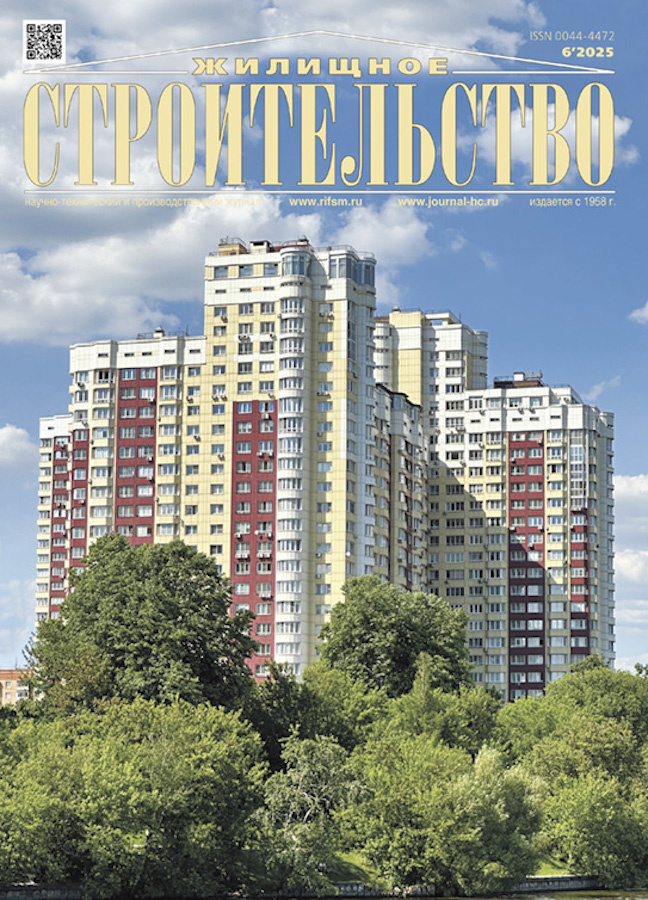Оценка изменения поступающей солнечной радиации за отопительный период в Москве
- Авторы: Горбаренко Е.В.1,2, Коркина Е.В.2,3
-
Учреждения:
- Московский государственный университет им. М.В. Ломоносова
- Научно-исследовательский институт строительной физики Российской академии архитектуры и строительных наук
- Московский государственный строительный университет
- Выпуск: № 6 (2025)
- Страницы: 12-16
- Раздел: СТАТЬИ
- URL: https://archivog.com/0044-4472/article/view/688275
- DOI: https://doi.org/10.31659/0044-4472-2025-6-12-16
- ID: 688275
Цитировать
Аннотация
При расчетах энергии, затрачиваемой на отопление и вентиляцию здания, учитываются климатические характеристики местности. По данным метеорологических многолетних наблюдений, в настоящее время фиксируется глобальное потепление климата на Земле. При долгосрочном планировании социально-экономического развития территорий необходимо учитывать изменения климата и возможность адаптации к ним. Важными параметрами, рассматриваемыми в аспекте потепления климата в течение холодного времени года, являются климатические характеристики отопительного периода: продолжительность и средняя температура. К возможным положительным для Российской Федерации последствиям потепления климата относится сокращение расходов энергии, затрачиваемой на отопление зданий в отопительный период. Ранее авторами настоящей работы рассмотрено изменение продолжительности и средней температуры отопительного периода за период многолетних метеорологических наблюдений. Показано, что имеется тенденция к понижению градусо-суток отопительного периода, это дает экономию при расчете потребляемой энергии на отопление и вентиляцию здания. Рассматривается изменение поступающей солнечной радиации на стены различной ориентации за период многолетних наблюдений. По результатам наблюдений не обнаружена тенденция в изменении поступающей солнечной радиации. Для расчетов теплопоступлений от солнечной радиации через светопрозрачные ограждающие конструкции можно рекомендовать использовать средние климатические данные.
Полный текст
Об авторах
Е. В. Горбаренко
Московский государственный университет им. М.В. Ломоносова; Научно-исследовательский институт строительной физики Российской академии архитектуры и строительных наук
Автор, ответственный за переписку.
Email: catgor@mail.ru
канд. геогр. наук
Россия, 119991, Москва, Ленинские горы, 1; 127238, Москва, Локомотивный пр., 21Е. В. Коркина
Научно-исследовательский институт строительной физики Российской академии архитектуры и строительных наук; Московский государственный строительный университет
Email: elena.v.korkina@gmail.com
канд. техн. наук
Россия, 127238, Москва, Локомотивный пр., 21; 129337, Москва, Ярославское ш., 26Список литературы
- Малявина Е.Г., Фролова А.А. Выбор экономически целесообразной теплозащиты зданий на Севере РФ // Жилищное строительство. 2022. № 12. С. 72–78. EDN: NMLVMK. https://doi.org/10.31659/0044-4472-2022-12-72-78
- Гагарин В.Г., Чжибо Ч. Учет градусо-суток отопительного периода при сравнении потребления энергии зданиями // БСТ: Бюллетень строительной техники. 2016. № 6 (982). С. 58–59. EDN: VZKYOP
- Переведенцев Ю.П., Гимранова А.Б., Шарипова М.М., Аухадеев Т.Р. Современные изменения климатических характеристик отопительного периода в Казани // Ученые записки Казанского университета. 2014. Т. 156. Кн. 4. С. 123–130. EDN: TKVFAT
- Климат Москвы в условиях глобального потепления / Под ред. А.В. Кислова М.: МГУ, 2017. 288 с.
- Eames M., Dixon T., May T., Hunt M. City futures: Exploring urban retrofit and sustainable transitions. Building Research and Information. 2013. No. 41, pp. 504–516. https://doi.org/10.1080/09613218.2013.805063
- Yunsong Han, Hong Yu, Cheng Sun. Simulation-based multiobjective optimization of timber-glass residential buildings in severe cold regions. Sustainability. 2017. Vol. 9(12), pp. 2353.
- Самарин О.Д. Об обоснованном определении границ отопительного сезона // Жилищное строительство. 2017. № 1–2. С. 33–35. EDN: XXQRRN
- Дворецкий А.Т., Спиридонов А.В., Шубин И.Л. Низкоэнергетические здания: окна, фасады, солнцезащита, энергоэффективность. М.: Директ-Медиа, 2022. 232 с. EDN: STJNVI
- Горбаренко Е.В., Гагарин В.Г., Коркина Е.В. Изменение характеристик отопительного периода в Москве в связи с глобальным потеплением климата // Жилищное строительство. 2024. № 6. С. 25–31. EDN: CCNRVW. https://doi.org/10.31659/0044-4472-2024-6-25-31
- Горбаренко Е.В. Радиационный климат Москвы // Метеорология и гидрология. 2020. № 7. С. 36–49. EDN: NVJQII
- Горбаренко Е.В. Экстремумы и основные тенденции в многолетней изменчивости радиационных параметров атмосферы города Москвы // Вестник Московского университета. Сер. 5, География. 2022. № 6. С. 90–103. EDN: LEJEJT. https://doi.org/10.55959/MSU0579-9414-5-2022-6-90-103
- Коркина Е.В., Горбаренко Е.В., Гагарин В.Г., Шмаров И.А. Основные соотношения для расчета облучения солнечной радиацией стен отдельно стоящих зданий // Жилищное строительство. 2017. № 6. С. 27–33. EDN: YULPYP
Дополнительные файлы













